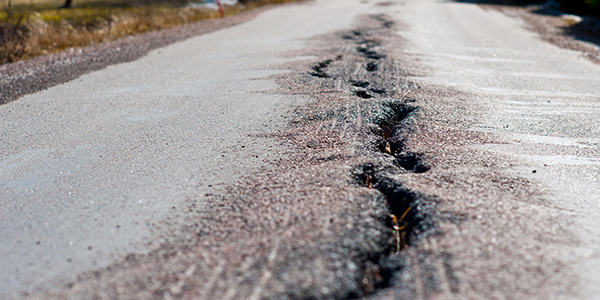The Swedish National Road and Transport Research Institute, VTI, has tested a new scanning-laser technology for road surface measurement. The tests show the new technology for comprehensive transverse-profile measurement provides dependable values in measuring transverse profile and rut depth.
Scanning-laser technology, which permits comprehensive transverse profile measurement, has developed greatly over the past decade. Today it is a technology that is commonly used both in Europe and internationally to describe the condition of the road surface. The old technology, based on point lasers, is, however, still in use in Sweden and Finland.

“This technology is tried and tested and provides a dependable result. At the same time, maintenance work provides evidence that the measurements supplied by the point-laser systems are insufficient to provide an comprehensive basis on which sections is chosen for action”, says Thomas Lundberg, VTI.
The information that is lacking is the condition of the surface with regard to surface damage and cracks. With comprehensive transverse-profile measurement there are opportunities to obtain this information, thanks to the development taking place in the technology with increasing resolution in the transverse and longitudinal directions, combined with better accuracy.
How to detect cracks
The outcome of the study shows that the technology for comprehensive transverse-profile measurement provides dependable values in measuring transverse profile and rut depth on the test sections and objects used. The methods and limit values normally used to approve the point-laser systems can also be used for the systems with the comprehensive measurement of transverse profile, with no impact on approved outcome.
“There is a need within the Swedish Transport Administration to be able to detect surface damage and cracks, and there are opportunities with the new technology, says Thomas Lundberg.
Some minor changes are required in the method descriptions governing requirements and method for condition measurement to match the scanning technique.
As the outcome of the study on transverse profile and rut depth is favourable, it provides opportunities to study what value the new technology can add. The obvious next step is to examine the possibility of detecting surface damage and cracks, which will be studied in a continuation project funded by the Swedish Transport Administration.
About the study
The aspects included in the tests are: measurement of road-network loop – repeatability and reproducibility, measurement of project level sections – repeatability and measurement of test sections – validity and repeatability.
VTI report 961A: New technology for road surface measurement: transverse profile and rut depth
 Contact:
Contact:
Thomas Lundberg
thomas.lundberg@vti.se
VTI, Sweden






Follow us: